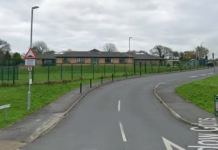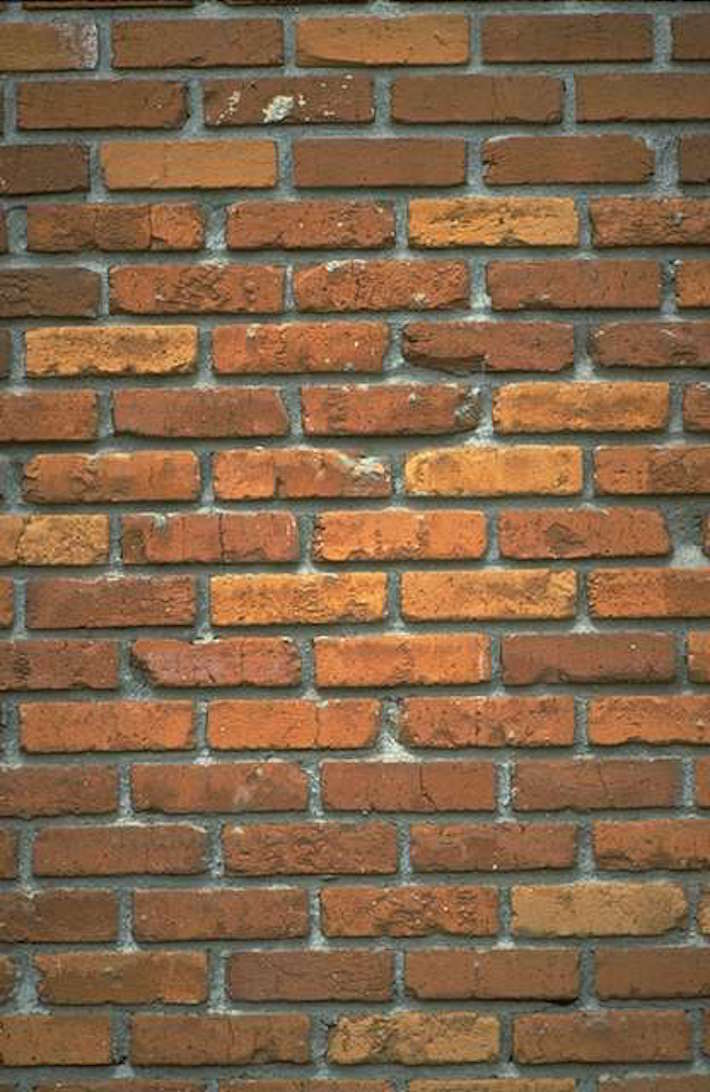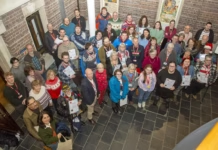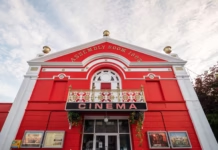Everyone who looks into their family history will, at some point during their research, encounter the dreaded “brick wall”, the moment when you think “That’s it! I can’t find him/her!” It happens to us all. Sometimes, I suppose, some brick walls do stay unsolved; it turns out to be the end of the line for that branch of the family, from your personal perspective.
Others are solved by chance, stumbling over a new clue when looking into another ancestor or just by leaving the problem for a few months and going back to look at it with fresh eyes. Also, just because you have been unable to find that ancestor, that doesn’t mean to say that someone else researching the same family line, either now or in a few years time, won’t be successful.
Some of the most common brick walls I have found during my research have been:
- Too many search results with the same name.
This can be more frustrating than having no matches at all to your search, because you know that there is quite a strong possibility that your ancestor is included somewhere in the long list of names your search has found. One of the best solutions around this problem is elimination! As time consuming as it is, the only way is to narrow down the list of possible ancestors that you have in front of you. That means going through the list and trying to trace them through the various records collections and using any information you already have on this ancestor and their family to help you in your elimination process.
I have been facing this problem myself with two of my great grandmothers. Their names were Catherine Davies, with a father named David Davies and Mary Jenkins, with a father named John Jenkins. Catherine’s father David is noted as a farmer on her marriage certificate and he is not marked down as “deceased” on the certificate, so I know that he was alive at the time of her marriage in November 1890. Likewise, Mary’s father John is not down as “deceased” on her marriage certificate, in October 1883 and his occupation is given as a coal miner. Not too many farmers and coal miners with the surnames Davies and Jenkins in Wales, I suppose?
I have been working, slowly, on the Mary Jenkins list on and off for over three years. I used the information I had and eliminated most of the suggestions my search came up with. I was left with two or three possibilities as to which Mary Jenkins was my Mary Jenkins and I still had the feeling that I would never solve the puzzle. Then, about eighteen months ago, I found the 1891 Wales Census for Mary, her husband Josiah and their family.
- Missing vital records
Sometimes, no matter how hard you search, there will be gaps in your records; that missing birth record or census Record. Often, there is a mistake in the name given for the record you are trying to find. With a birth record, perhaps the baby was born before the parents married and has the mother’s surname. By the time of the next Census, if the parents have married by then, the child would be listed under the father’s surname, so, if you are having trouble locating a birth record, look for it under the father’s name and the mother’s maiden name.
Another tip is to look under different ways of spelling your ancestor’s surname. Sometimes the name was misheard by the Census taker and written incorrectly. Errors often occurred when the Census records were transcribed later, when the transcribers mis- read the writing of the Census taker.
Both of these scenarios, too many search results and errors in the taking or transcribing of information, contributed to my “brick wall” regarding my great grandmother Mary Jenkins.
As I mentioned earlier, they married in 1883, so the first Census after their marriage was the 1891 Census and I couldn’t find them on it, no matter how many times I searched. I had them on the 1901 and 1911 Censuses, living in St. David’s, just outside Dafen; they married in Llanelli in 1883, so I presumed that they had settled in Llanelli after their marriage, but I couldn’t find them on the 1891 Llanelli Census returns. I widened the search to the whole of Wales and even the English 1891 Census, just in case they had moved for work, as Josiah, my great grandfather and Mary’s husband, was from a family who had constantly moved around North, South and Mid-Wales, looking for work during earlier Census records, but still, nothing!
By the time of the 1891 Census, Mary and Josiah had three children, two boys and one girl, aged between 2 years and 6 years. Their names were William John, Thomas and Mary Jane. I decided to look for the family by searching using the children’s names, even though they weren’t very distinctive names. I wasn’t successful with Mary Jane’s name, but when I searched using William John, I found them, living in Aberdare!
I was so pleased to find them, after searching for almost two years. On the transcript of the1891 Wales Census, Josiah’s name had been transcribed as Joshia; Mary Jane was listed as Mary. The biggest obstacle was that their surname was given as Harrie, with the letter “s” left off at the end. All the other names and information matched my Mary and Josiah and there was an added bonus! Included in the household was a young man, aged 25, named John Jenkins, a coal miner. His relationship to the head of the household was given as ………………. brother-in-law, Mary’s brother! I had found a clue to possibly help find Mary’s life before she married Josiah!
I looked at the three Mary Jenkins possibilities I had kept on file and checked if any one of them had a brother John; two of them did, so that possibly eliminated one of my options. Of the two remaining Mary Jenkins, neither were a perfect match.
Studying the information I had collected about my Mary Jenkins, I could see that she was born around about 1861/1862. She consistently gave her date of birth as 1861 or 1862 in all of the Census Records I have for her. On her marriage certificate in October 1883, her age is given as 21, corresponding to a date of birth in either 1861 or1862. Her father and brother were both named John and both had worked as coal miners. One of the two Mary Jenkins I had narrowed it down to seemed like the best match, but still not a perfect match.
I had kept the records of a Mary Jenkins, born in Llandeilo in 1860, and living in Glynamman, as a possible match to my Mary Jenkins. She had a father named John, who was a coal miner and she also had a younger brother named John. Some details don’t match exactly; the Mary Jenkins born in Llandeilo had a birth year of 1860, not 1861/1862. Her brother John had a birth year of 1870, which means that there was nearly a ten year age gap between them. However, on the 1891 Census that I found for my Mary Jenkins and her brother John, there is only a +four year age gap between them.
Mary Jenkins’ (from Glynamman) mothers name was Jane. Mary Jenkins in my family tree had a mother-in-law named Mary. Mary and Josiah, my great grandparents, had a daughter, my great aunt, named Mary Jane, possibly named after both her grandmothers? I’m still not 100% sure I have the right Mary Jenkins, but something tells me that I have.
About two years ago, I consulted a genealogist to see what advice she could give me regarding tracing Mary Jenkins. Llanelli Library had invited two genealogists to give free advice to anyone needing advice on tracing their family tree. I went along and consulted with one of them, presenting most of the evidence I have outlined above. At that time, I hadn’t found the 1891 Census with Mary’s brother included in the household, so I was unable to show that document. The genealogist said that she was doubtful that I would ever be able to fully prove that Mary Jenkins from Glynamman and my great grandmother was the same person, due to the popularity of the name and that of Mary’s father’s name, John. She agreed that there was a strong possibility of it, but that no-one would be able to confirm it definitely.
The genealogist said the same thing about my other “brick wall”, my great grandmother on my father’s side, Catherine Davies and her father David. So far, I have not had much success with my search for Catherine’s origins, but I’m still hoping I’ll stumble on to a clue, just as I did with Mary.
To get around my “brick wall” with Mary, I started a separate Family Tree for her, using the records and details of Mary Jenkins and her family from Glynamman. While these facts and records are not recorded in my main tree, I am happy to keep a separate record of them for now, until hopefully, I will find someone or something to prove that my hunch is right and then I will be able to transfer all of the information on the Jenkins family of Glynamman to my original tree.
- Changing of names
Tracing our ancestors by looking for them by their name seems like a safe method of searching for them, but unfortunately, that doesn’t always prove to be true. Many people would decide when they were adults to be known by their middle name instead of their first name, or vice versa! Some ancestors even changed their given names to something completely different!
One of the first ancestors I looked at when I started researching my family history was my great, great grandfather Joseph Prickett. He was my paternal grandmother’s grandfather, on her mother’s side. My reason for looking for Joseph first was that, to me, he had an unusual surname and I knew that would be a help in my search. The earliest Census record I have for him is in the 1851 Wales Census. Joseph was born in Pembrokeshire, in the St. Lawrence Parish, in about 1825. In the 1851 Census, he is single and working as a farm servant on a farm owned by two brothers, in Hayscastle, Pembrokeshire, near the parish where he was born.
By the time of the 1861 Census, he is a farmer, with a farm in Roch, Pembrokeshire. Joseph married Elizabeth Roberts on 23rd December 1852. Joseph and Elizabeth had seven children, as far as I know, between 1853 and 1870, when the youngest George, was born. When I found the 1881 Census, I discovered two unusual things: they had another child in early 1881, making Elizabeth about 53 years old when Elizabeth Ann Prickett, my great grandmother, was born and from the 1881 Census on, Elizabeth’s year of birth changed, making her about 19 years younger than she had been!
Of course, I finally figured out that they were two separate wives named Elizabeth. Elizabeth Roberts, Joseph’s first wife, died in 1877, aged 49. I found another marriage record for Joseph in 1879, to Elizabeth Smith, my great, great grandmother. On every Census record between 1881 and 1911, Elizabeth’s name is down as Elizabeth, but I couldn’t find her on Census records before 1881.
Before I bought the marriage certificate of Joseph and the second Mrs. Prickett, I mistakenly thought that he had married a woman born in Roch in 1847, the same year as Joseph’s wife, also named Elizabeth Smith. Her father was named Thomas. I put the fact that they were born in different parishes down to human error, either on my ancestors’ part or because of the Census enumerator. I researched this Elizabeth and her family for a few weeks, until I finally sent for the marriage certificate. I sent for the certificate originally to verify Joseph’s father’s name and occupation, so you can imagine my surprise/shock/ horror when I noticed the name of the bride’s father, WILLIAM Smith!!
I couldn’t find any Elizabeth Smith in the pre 1881 Census records with matching information, but an Eliza Smith kept appearing in every search. Her details matched Elizabeth, Joseph’s second wife, perfectly, from the year born, to the parish where they were born.
Elizabeth, my great, great grandmother, was born in a small parish in Pembrokeshire called St. Edrens. This is the place of birth that she put down on the 1881, 1891 and 1901 Censuses. When I checked the Parish Registers and Census records for St. Edrens, I found only one Smith family, living on a farm called Tresison, in St. Edrens. This family comprised of William Smith, born in 1818 and his wife, Ann, born in 1821 and their children. William and Ann married in Uzmaston on 23rd March 1839. They had seven children between 1839 and 1857. One daughter named Eliza was born in 1843, but died in 1845. In 1847, another daughter was born and she was also named Eliza. This Eliza appears on the 1851 and 1861 Censuses, living with her family. In the 1861 Census, her occupation is given as “working for a neighbour”. By the 1871 Census, Eliza has moved to a farm in Prendergast, Haverfordwest and her occupation is given as “dairy woman”. There is no record of Eliza Smith in the Census records after the 1871 Census, but there is also no death record in that name, at that time either.
Like my instinct about Mary Jenkins some years later, I had the same instinct with Eliza Smith from St. Edrens; I researched her family and kept the records separate from my main family tree records. I was also in touch with two people who were descendents of one of Eliza Smith’s brothers and one of her sisters and they too were convinced that Eliza and Elizabeth were one and the same. Eliza’s brother Alfred Smith’s great, great grandson Leighton, who gave me a load of information and advice, was convinced of our theory from the start and it helped that he is a police detective, so I heeded his advice!
When the 1911 Census became available, Leighton contacted me, to see if I had checked Joseph and Elizabeth Prickett on that census. I had, but as I hadn’t paid to see the original document, I only had confirmation that they were still alive and on the 1911 census. Leighton informed me that on this census, for where born, instead of putting St. Edrens, Pembrokeshire, as Elizabeth had on other Census records, this time she had added the name of the farm where she was born, Tresison, the same as Eliza Smith! This confirmed that Eliza Smith had changed her name to Elizabeth and become Elizabeth Prickett!
Other facts also fitted; Eliza had an older sister named Pheobe. My father had an aunt named Phoebe and the rumour in the family was that she was named after a relative on my great grandmother’s side of the family, which proved to be true, as one of Eliza’s sisters was named Phoebe, making her my great grandmother’s aunt. My great grandmother, Eliza/ Elizabeth’s daughter, was named Elizabeth Ann Prickett, Ann being the name of Eliza/ Elizabeth’s mother and sister.
I noticed that in the 1891 Census, William and Ann Smith and their daughter Ann lived in the farm next to Joseph and Elizabeth Prickett. In the 1901 Census, Eliza’s sister Ann Smith is living on another farm with her daughter, son in law and their children; the farm is on the same list as Start Naked Farm, belonging to Joseph and Elizabeth Prickett, which means that they were in close proximity to each other.
I don’t know why Eliza changed her name; perhaps she didn’t like it and preferred the name Elizabeth. Why ever she did it, it certainly makes tracing ancestors a lot more difficult!
Another Eliza in my family did a similar thing. My mother’s paternal grandmother was named Eliza Clara Millward. When I started researching my family history seriously in 2008, an auntie of mine gave me my grandfather’s birth certificate to look at. I was confused as his mother’s name was down as Elizabeth and I knew for a fact that she had been named Eliza; my mother was named after both her grandmothers, MARY Jenkins and Eliza CLARA Millward, and she remembered both her grandmothers well all through my childhood and teens. My auntie told me that my grandmother had told her years earlier that Eliza Clara went through a phase for a little while, that she decided to be known as Elizabeth instead of Eliza and that phase happened to be when my grandfather was born, so she is named for eternity on my grandfather’s birth certificate as Elizabeth and a little later, she went back to being known as Eliza!
Trying to break down your brick walls in your research seems like a never ending obstacle, but it can be done with determination and luck in equal measures! The feeling of elation you experience when all the pieces fit together and you finally solve the puzzle that has taken over your thoughts for what seems like forever is amazing! It’s well worth the wait and all the hours, weeks, months and years spent pouring over and sifting through documents and information.
Ready for the next “brick wall”!

| [donate]
| Help keep news FREE for our readersSupporting your local community newspaper/online news outlet is crucial now more than ever. If you believe in independent journalism,then consider making a valuable contribution by making a one-time or monthly donation. We operate in rural areas where providing unbiased news can be challenging. |


















